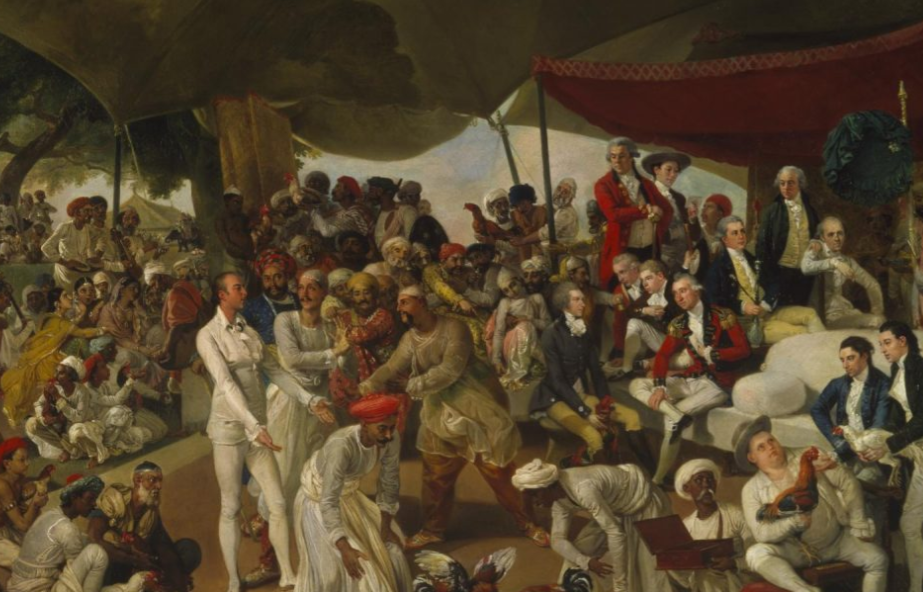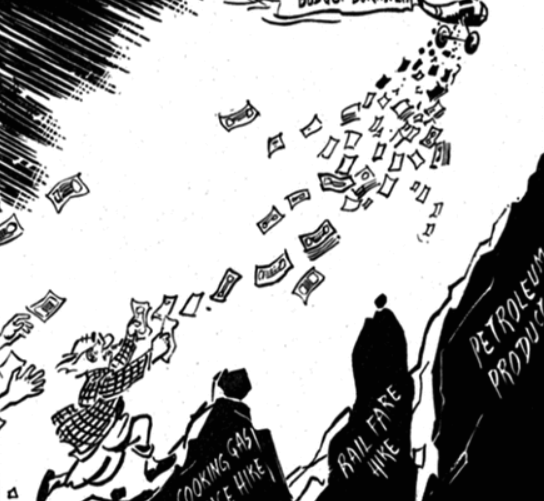From Law to Loot: Policies That Age and Mitigate the Common Man
Millions of Indians wake up every day and work hard to make ends meet. They pay their taxes, they obey the rules and hope for a better future. Yet sometime between making their money and spending it, a great deal evaporates. Not because they are wasteful, but because the system is constructed to deprive them — in a legal manner.
This is not about corruption or criminality. This is about how policies, taxes and regulations are rigged in ways few voters even notice yet extract billions of dollars from our pockets. From the fuel in their tanks to the bread on their tables, from medicine they have to take to the home they dream of — all this comes with hidden costs which reap profit for someone else but makes life harder for these average men.
The Tax Trap: Are You Paying More Than You Think?
So when Ramesh makes ₹50,000 a month, he assumes that’s his income. But by the time he comes to spend it, much has been eaten up by various taxes. Let’s see how this plays out in practice.
Direct Taxes: The Visible Bite
Income tax is not new to anyone. As per the new tax regime in India which has currently been recommended, tax slabs start from ₹3 lakhs/year. An ₹25,000 of that amount goes towards income tax for a person earning ₹6 lakhs a year. Throw in your professional tax (₹2,400 per annum in most states), and you’re already behind a substantial little sum before you even start earning.
Actual Example: Priya, a Bangalore-based software engineer whose income is around ₹8 lakhs per annum, would pay about ₹62,500 as income tax under the new regime. That’s more than she brings home in a month gone before she gets it.
Indirect Taxes: The Hidden Robbery
But the true drain begins when you get to spending. Goods and Services Tax (GST) is added to pretty much almost any goods you purchase. In India the GST rates are from 5% to 28%, depending on what you’re buying.
| Item Category | GST Rate | Annual Impact (Average Family) |
|---|---|---|
| Essential Foods (Rice, Wheat) | 0% – 5% | ₹2,000 – ₹3,000 |
| Packed Foods | 12% – 18% | ₹8,000 – ₹12,000 |
| Apparels & Footwear | 5% – 12% | ₹3,000 – ₹5,000 |
| Mobile Handsets & Electronic Items | 18% | ₹5,000 – ₹8,000 |
| Vehicles (Two-wheelers) | 28% + CESS | ₹15,000 – ₹20,000 |
Petrol Prices: The Daily Drain
Let’s take petrol, something most families need every day. Petrol is priced at ₹100 in major cities of India in October 2024. But wait for the shocker: of this ₹100, about ₹60-65 is nothing but taxes.
60% of petrol price is TAXES
This also includes central excise duty and VAT levied by the states. So when you fill up your (gas) tank with ₹2,000 worth of petrol, you’re actually paying ₹1,200 in taxes. For a middle-class family that spends ₹3,000 on fuel each month, that’s ₹21,600 in fuel taxes for the year.
Policy Loopholes: Who Really Benefits?
The Corporate Tax Gift
While the common man pays tax on every rupee out of its earning, a big firm gets a lot of reliefs. India, for instance, reduced its corporate tax rate from 30% to 22% in 2019 (and as low as 15% for new manufacturing companies). This was supposed to spur investment and job growth. But was it a success for the old man on the street?
While the data showed that collections of corporate taxes declined, it also showed that people kept paying even more individual taxes. Overall, between 2019 and 2024, personal income tax collection rose by 45 percent while corporate taxes grew sluggishly. This leads to ordinary citizens having to pick up the slack.
Learn more about tax policies at zistalegalis.com.
The Rich Farmer Myth and Agricultural Income Exemption
In India, income from agriculture is totally exempt from tax. This sounds good — we do after all want to support farmers. Now here’s the catch: a vast number of wealthy individuals list their income as agricultural to avoid dues. A businessman can invest in buying farmland, show agricultural income and pays no tax on it whereas a salaried person earning the same amount has to pay as much as 30 per cent tax.
The Reality: The small farmers making ₹50,000 a year do not get much out of the exemption because they’re below the threshold for tax in any case. But even crores in income won’t get a farmer-millionaire to pay anything on farmland.
Real Estate: The Dream That Drains
Registration Charges and Stamp Duty
For most Indian families, purchasing a home remains the biggest dream. Imagine you save up to purchase a ₹50 lakh flat in a Tier-2 city, one day. But as soon as you decide to buy, the government packs its own share in:
- Stamp Duty: 5-7%, varies state wise (₹2.5 – ₹3.5 Lakhs)
- Registration Fees: 1-2% (₹50,000 – ₹1 lakh)
- GST on under-construction property: 5% (₹2.5 lakhs)
That is ₹5.5 to ₹7 extra lakhs “over and above” your 50 lakh property. And that does not even get you to the interest you pay on your home loan over 20 years, which can easily double the real cost of your house.
Property Tax: Paying Forever
You also have to pay property tax every year, even after you buy your house. In cities like Mumbai, Delhi and Bangalore this can vary between ₹5,000 to ₹50,000 per year based on the market value of your property. You own the house, you’ve already paid stamp duty, but you’re still paying a tax on it every single year.
Health and Education: Paying for Basic Rights
Health-Related Indebtedness: The Epidemic of the Poor
India is devoting a mere 2.1% of its GDP on healthcare (as per 2024 figures). By comparison, developed countries allocate 8-10%. In other words, the vast majority of health care costs are directly levied on citizens.
Average Yearly Medical Expenses (Indian Family)
| Expenses Type | Lower Middle Class | Middle Class | Frequency |
|---|---|---|---|
| Regular Check-ups & Medicine | ₹15,000 – ₹25,000 | ₹25,000 – ₹40,000 | Monthly |
| Health Insurance Premium | ₹12,000 – ₹18,000 | ₹20,000 – ₹35,000 | Annually |
| Emergency/Hospitalisation | ₹30,000 – ₹50,000 | ₹50,000 – ₹1,00,000 | As needed |
| Total Annual Burden | ₹57,000 – ₹93,000 | ₹95,000 – ₹1,75,000 |
And even when you have health insurance, most policies come with co-payment clauses, room rent limits and capped the number of a condition. A family dealing with a major illness can easily find itself out of pocket ₹5-10 lakhs, even if they have insurance. This one cost can obliterate years of savings.
Education: The Long-term Cost of Learning
Quality education in India is increasingly private. Government schools frequently do not even have basic facilities, leaving parents with private schools as the only option. Here is what it cost a middle-class family on average to educate one child:
- Private School (Class 1-10): ₹50,000 – ₹1,50,000 per year
- Coaching Classes: ₹30,000 to ₹80,000 per year
- College Tuition: ₹2,00,000 – ₹5,00,000 per annum
- Professional Courses (Engineering/Medical): ₹5,00,000 – ₹15,00,000/year
A family can easily shell out ₹30-50 lakhs over 15-20 years just for the education of their two children. And that is simply “normal” now.
For more insights on legal and policy matters, visit zistalegalis.com.
Food and Staples: The Inflation Monster
Rising Prices, Stagnant Wages
Indian food inflation actually averaged 6-8% annually between 2019 and 2024, while the average rise in wages for most workers loitered at 4-5%. This, in other words, means your purchasing power is being eroded each and every year.
- ₹15,000 – Typical monthly grocery bill in 2024
- ₹9,000 – Same groceries cost in 2019
The prices of cooking oil, pulses, vegetables and milk had increased by 40-60% in the last five years. A family that lived reasonably on ₹30,000 monthly income in 2019 now finds it difficult to get by with ₹40,000.
The GST on Essentials Debate
Although staples like rice and wheat are GST exempted or at least charged little, packed and processed foods attract a 12-18% GST. For working families who depend on easy-to-prepare food products because there’s never enough time in the day, it can be especially significant. A family consuming packaged foods of ₹5,000 per month is shelling out ₹7,200-10,800 a year alone as GST on these products.

The Employment Crisis: When a Full-Time Job Isn’t Enough
Contract and Gig Economy
Indians are also more likely to work in the gig economy, as delivery partners, cab drivers and freelancers. While this is working, it is not stable. They are not entitled to EPF (Employee Provident Fund), gratuity, paid leave or health insurance. They earn every day but with no cushion.
In Delhi, food delivery partners work for 10-12 hours a day and make ₹20,000-25,000 each month. But in the meantime, they have to foot the bill for:
- Vehicle fuel and maintenance: ₹5,000-7,000
- Mobile recharge and internet: ₹800-1,200
- Accidents/repairs: ₹2,000-3,000 (average)
Even if you calculate hourly, they are making well less than minimum wage and zero benefits or job security.
Unemployment and Underemployment
Millions of young Indians, even those with degrees, are either jobless or underemployed. Engineering graduates work across the city as delivery boys, MBA passers sell insurance and skilled personnel like plumbers working at shops end up getting jobs below their qualification but have no option to quit else face poverty. This has the effect of suppressing wages across the board — if there are more people available to work than there is demand for their labor, companies can lowball compensation because they know workers have no (or few) other options.
Small Business Owners: Crushed by Compliance
The GST Compliance Burden
GST was introduced to provide for a simple tax, but the reality is that it has turned into a compliance nightmare for small business. A small shop owner now must:
- File monthly GST returns (GSTR-1 and GSTR-3B)
- Keep an electronic record of every single exchange
- Deal with complex reconciliation processes
- Face fines for even trivial filing mistakes
Many small businesses have shut shop because they could not afford chartered accountants (more than ₹10,000-20,000 monthly) or handle the complex digital systems. Those who do join up often face financial stress, as the Government demands GST be handed over before money is even collected from customers.
For more information on India’s taxation system, check out the Income Tax Department of India.
What Can Be Done? Solutions for a Fairer System
Tax Reforms Needed
India’s tax structure should be simple at first. It is such a complicated tax system with too many slabs of income, exemptions and deductions that only the rich can escape from being taxed adequately. We need a much fairer, more progressive tax system where the wealthy pay their fair share.
Better Public Services
People who pay high taxes deserve excellent public services. Improved government schools would lower the cost of education. Better public health care would eliminate medical bankruptcy. Good public transportation would lower reliance on private automobiles and the cost of gasoline.
Closing Corporate Loopholes
Income-tax benefits to corporations should be on the condition that it creates jobs and leads to growth. If companies receive tax breaks but don’t produce jobs or invest in the country, then those benefits should be reversed.
Direct Benefit Transfer Expansion
Rather than taxing essentials and then subsidizing them through an unwieldy system, direct cash transfers to struggling households would be more efficient. This gets money into people’s hands and allows them to make the decision.
-
📊 Budget 2025 decoded legally—don’t miss this: The Legal Side of Budget 2025 Explained
The Bottom Line: Escaping the Vortex
Your ordinary Indian finds himself in a world where making money is difficult but holding onto that money is almost impossible. From the time they make to the time they spend, many hands are siphoning from their pockets — all legally, through policies that appear fair on paper but don’t operate that way in practice.
The answer isn’t to cheat on taxes or break laws. The answer is awareness and advocacy. When people know how a policy affects them, they can do better. They can vote for people who pledge a real change, not just populism. They can mobilize and demand a tax system that’s not only less crushing to the middle class.
And keep in mind that policies are made by people, and can be unmade by them. Each of us has a right to challenge unjust systems and to ask for something better. The first step is to understand that the drain on your pocket isn’t only bad luck — in more cases than not, it’s bad policy. And bad policies can be remedied, but only if enough people speak out.
The path from law to loot needn’t be automatic. With consciousness, activism and accountability we can create a system in which policies work for the people instead of sucking them dry.

Frequently Asked Questions
Q1: Why is Income tax for salaried in India so high?
Salaried individuals end up paying more taxes as their income is visible through TDS (Tax Deducted at Source). Salaried employees account for less than 30% of the work force but contribute around 70% of all income tax collected by the government. Other forms of earning income — agricultural income, or cash-based businesses, for example — are harder to monitor and frequently go untaxed.
Q2: How can I legally pay less in taxes?
You can decrease your tax outgo by making deductions under sections like 80C (for investments in PPF, ELSS, life insurance) which offers a deduction up to ₹1.5 lakhs, 80D (health insurance premium) and HRA (House Rent Allowance). What’s more, it may work to your advantage if you decide to opt for one of the older or newer tax regimes based on your investments. You can get individual solutions to your situation by consulting with a tax professional.
Q3: Why is petrol so expensive when crude oil prices are down?
Between ₹35-40 is the product cost per litre of petrol out of ₹100. The rest ₹60-65 is excise duty (central government tax), VAT (state government tax) and dealer commission. Even with prices for crude oil falling globally, the taxes in many places have been raised in order to keep up revenue in such a way that the price cut doesn’t actually make it to those who pay.
Q4: Is GST benefiting the common man in reality?
Some items have become cheaper under GST as there is no tax on tax (cascading taxes), but many essential items are now more expensive. Goods that were previously taxed at a lower rate or exempt are now subject to 5-12% GST. In theory, businesses then enjoy more streamlined compliance — but consumers typically end up paying more for many of those same items, especially on services that used to be taxed at a lower rate.
Q5: Why are corporate tax rates lower than individual tax rates?
The government says lower corporate taxes will encourage investment and hiring. But there has not been job growth to match and the tax burden has shifted to individuals, critics say. Companies also benefit from all sorts of exemptions and deductions that can lower their effective tax rate well below the standard rate, which is something individual taxpayers can’t access.
Q6: How can everyday people address unfair policies?
Democracy is not just about voting. Citizens can partake in democracy beyond merely casting a vote. That would include writing to MPs and MLAs, responding to public consultations when policies are being formulated, joining citizen advocacy groups, using RTI (Right to Information) if necessary, and lobbying for accountability and transparency in every policy decision by current or future governments, electing strong candidates who promise not mere populism but authentic tax and economic reform.
Q7: Why is health so costly in India when we have government hospitals?
Government expenditure on healthcare is 2.1% of GDP, which is extremely low compared to international norms. That is to say, government hospitals have no staff and no equipment and no medicine. People are incentivized to opt for private healthcare which is a for-profit model. The inflation in medical costs across India ranges from 10-15 per cent every year, leading to healthcare going out of reach for middle-class families.
Q8: Why does the common man feel the effect of inflation more than the rich?
When prices go up, the poor and middle class spend a larger share of their income on essentials like food, fuel and rent. If a person with income of ₹30,000 per month spends ₹20,000 on essentials and prices go up by 10%, this knocks a hole in their discretionary spending. For the rich, such costs form a smaller proportion of their income, so inflation hits them less. They can also buy assets that grow with inflation and thus protect their wealth.
For expert legal insights and policy analysis, visit zistalegalis.com.





